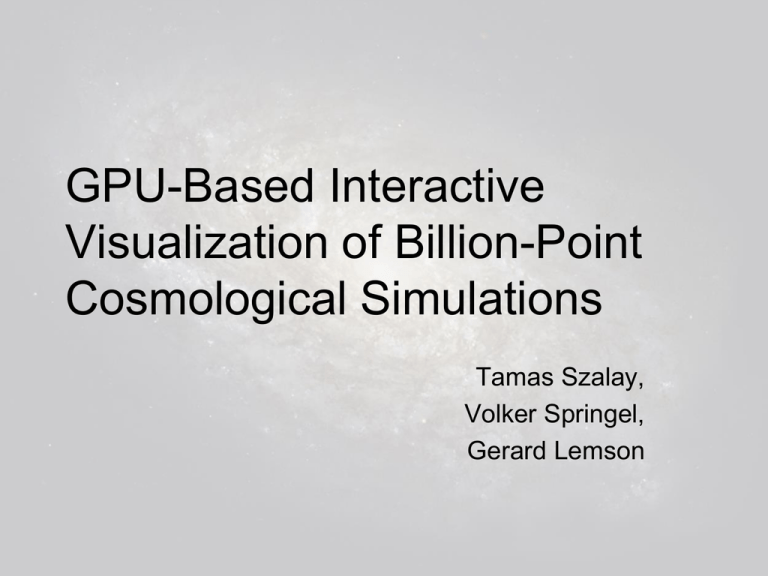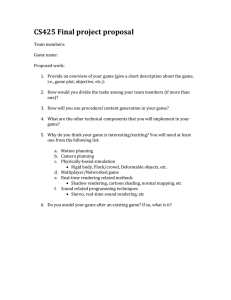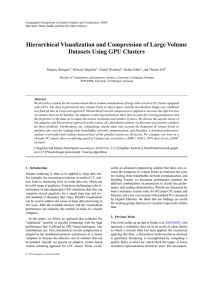GPU-Based Interactive Visualization of Billion-Point Cosmological Simulations Tamas Szalay,
advertisement

GPU-Based Interactive Visualization of Billion-Point Cosmological Simulations Tamas Szalay, Volker Springel, Gerard Lemson The Visualization Problem • Getting better at storage and processing – Distributed databases, clouds, etc… – I/O needs to be only as fast as computation • Doesn’t work for visualization – Would need to read all the data every frame or have it all in memory – Even rendering itself would be prohibitive • Could use pre-rendered movies – Trial and error takes time The Aquarius Simulations • • • • A series of n-body dark matter simulations Run from the early universe to today Box roughly the size of galactic neighborhood Run five times at different particle resolutions – Lowest has 2.3 million, takes up about 25 GB total – Highest has 4 billion, and takes up 20 TB • Each version has point data in 128 ‘snapshots’, with positions and velocities • Movies have been rendered, took weeks Visualization Motivation • Certain types of analysis very difficult otherwise – Qualitative impressions of gravitational structures • Verification of simulation and accuracy of structure finding • Identification of events of interest – Comparisons of multiple objects – Two colliding gravitational clusters – Dark matter streams • Public outreach Hierarchical Rendering • Don’t need to render everything – Saturates screen anyway • So show the same data, but render less – Create different levels-of-detail for entire dataset – Load different parts from different levels as needed • Put levels-of-detail on fast storage system • And give it a rendering front-end • Think Google Microsoft Maps Level Structure • Chose spatial octree because it is simple and general • Each node also has associated data – All of the data spatially contained within the cube – Except simplified to <= N points • Deeper in the tree means higher resolution • Organized this way on disk Selective Loading • What resolution data to load in what spatial location? – Close to viewer in high detail and far away in low detail • Can use the on-screen size of the relevant octree cube to determine resolution – Means, in theory, visually equivalent to entire dataset • Automatically scales to rendering hardware • Can spread out through time as well Rendering Front-End • GPUs are fast – Really fast – Can do an unbelievable amount of computation in rendering pipeline – Allows tool to still do significant processing • The actual rendering algorithm: – Brightness represents the line integral of the squared density in that pixel – Color represents the temperature – But there is quite a bit of computation involved Practical Results • Program currently runs on single desktop computer and attached storage – 4 GB RAM, GeForce 8800 GTS, 2x750 GB disk • Smoothly interacts with and renders 1 TB dataset (150 million points x 128 timesteps) • Rarely loads or renders to full depth – Could have arbitrarily large underlying data Future Possibilities • Storing and accessing data via databases – Could even do some processing in between • Distributed rendering • Remote rendering • Other datasets and data types – Meshes, volume data, medical imaging



